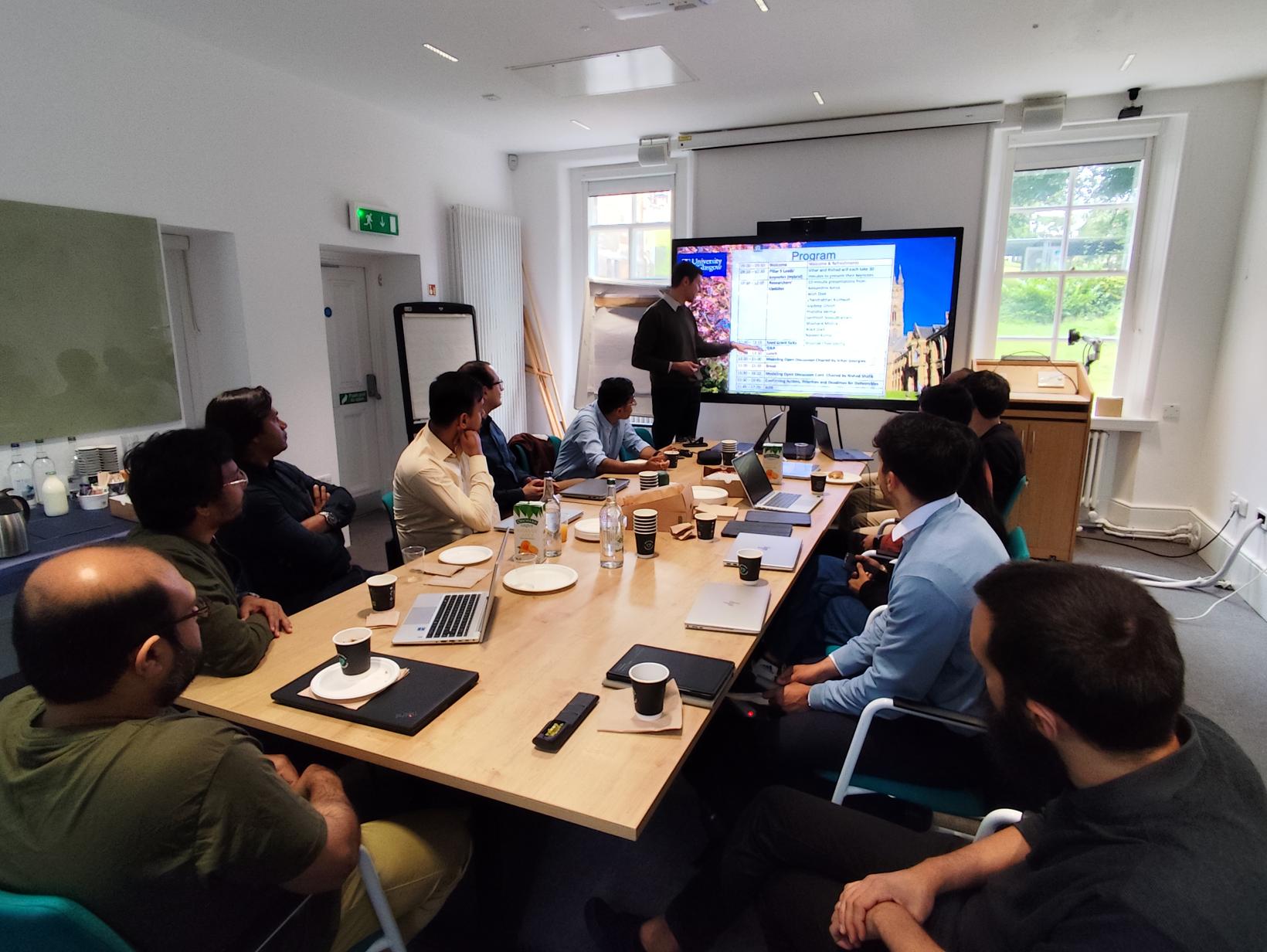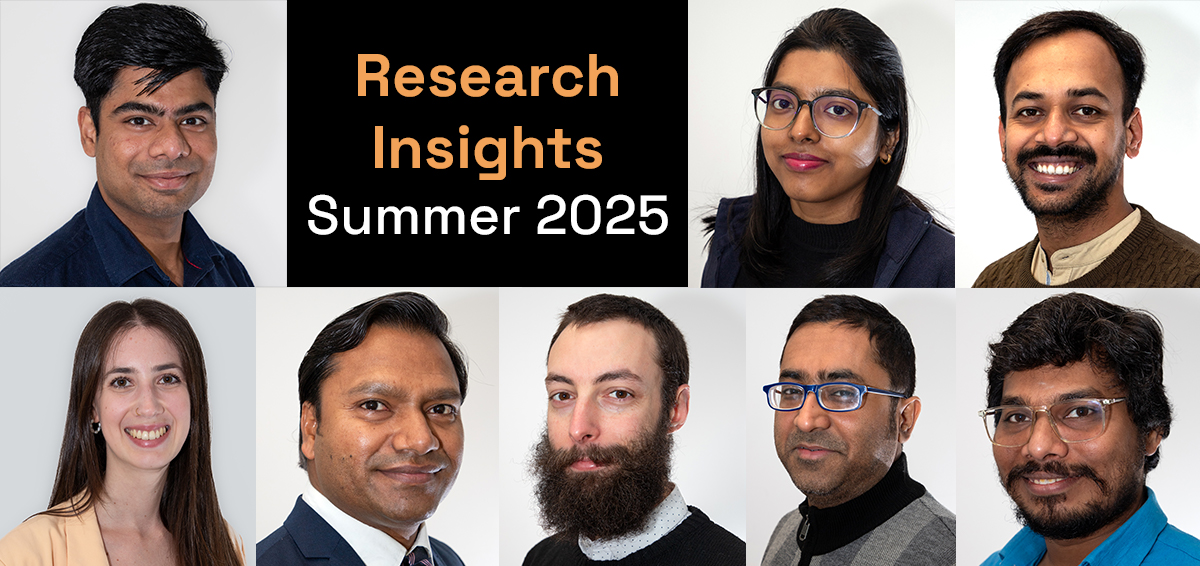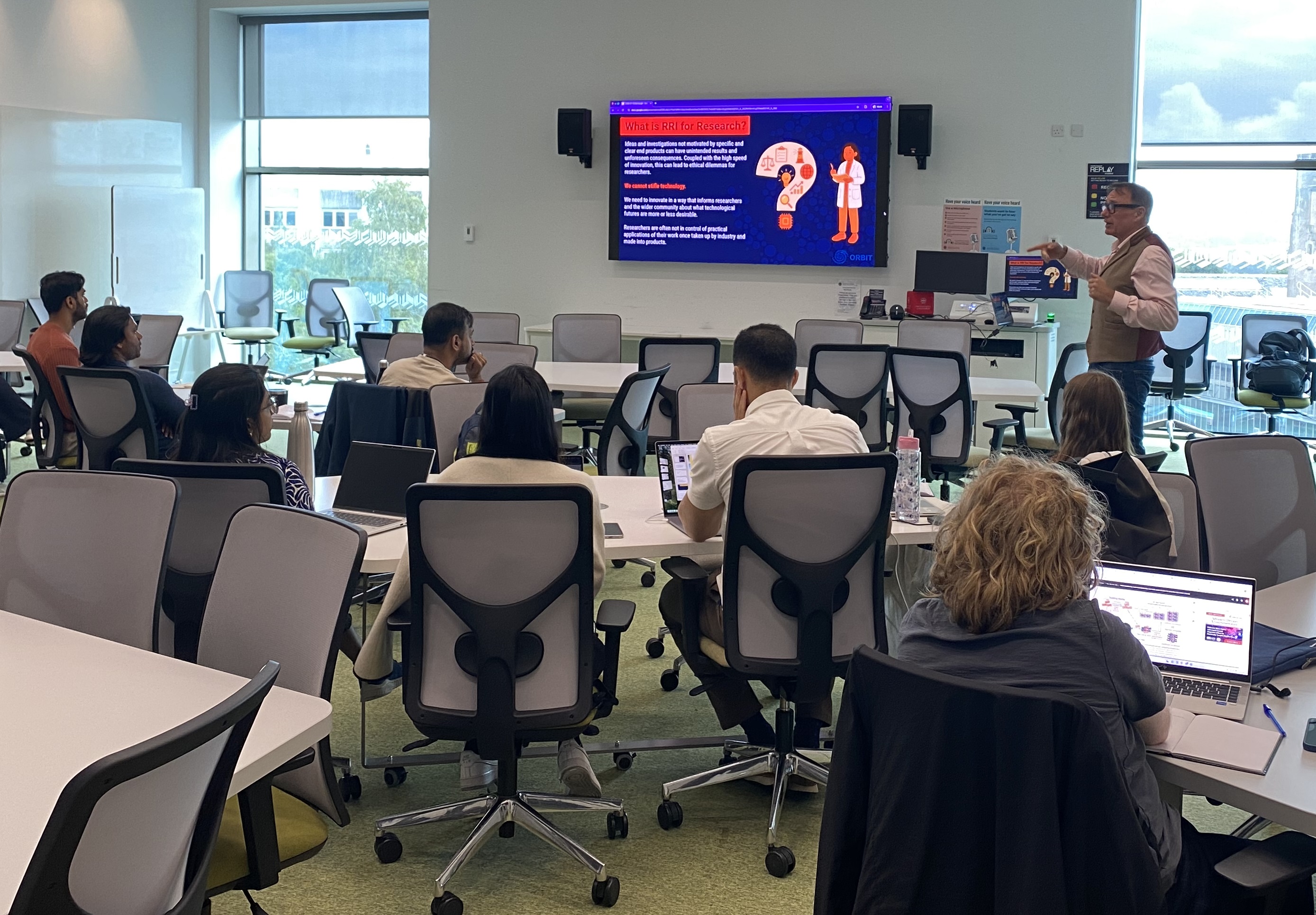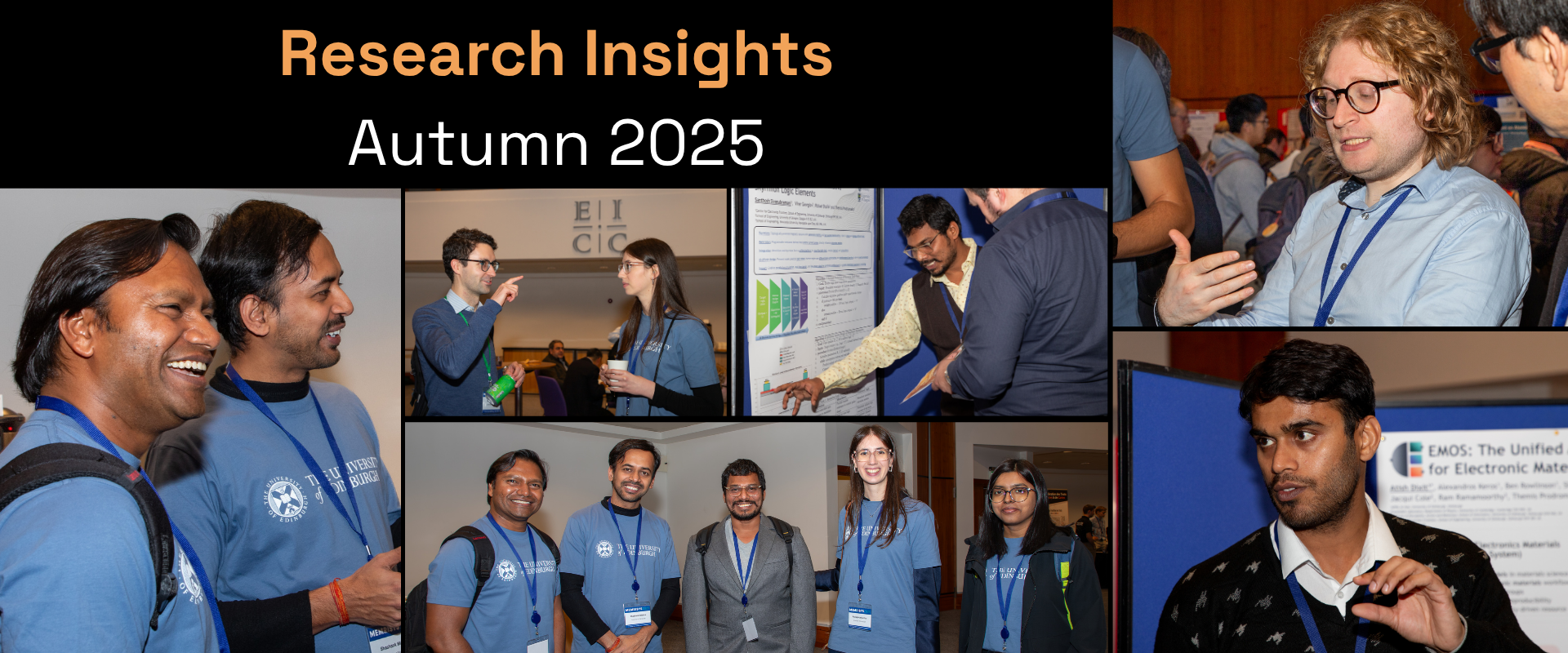The APRIL AI Hub Pillar 5 workshop convened at the University of Glasgow on July 28th, 2025, focusing on electronic systems modelling and digital twin technologies. Twelve researchers across pillars of APRIL and collaborators presented advances in computational methodologies, device physics simulation, and AI-integrated design frameworks, establishing critical research priorities for next-generation electronic systems.

Technical Research Presentations
The workshop featured comprehensive research updates across multiple domains of electronic systems modelling. Key presentations addressed advances in Technology Computer-Aided Design (TCAD) methodologies, incorporating machine learning algorithms for enhanced device simulation accuracy. Researchers demonstrated novel approaches to Density Functional Theory (DFT) materials characterization, enabling more precise electronic structure calculations for emerging semiconductor materials. Significant developments in 3D device architectures were presented, showcasing innovative modelling techniques for complex geometries beyond traditional planar structures. Circuit design optimization methodologies incorporated artificial intelligence frameworks to achieve superior performance metrics while reducing computational overhead. The integration of topology optimization algorithms demonstrated enhanced device efficiency through systematic geometric refinement.
Advanced Modelling Frameworks
Presentations highlighted breakthrough developments in skyrmion-based computational systems, representing a paradigm shift toward magnetic information processing. FinFET technology advancements were discussed, with particular emphasis on quantum mechanical effects in scaled devices and their accurate representation in simulation environments. Machine learning image processing techniques were demonstrated for automated device characterization and defect identification. These methodologies enable rapid analysis of fabricated structures, providing immediate feedback for process optimization. The integration of AI frameworks into traditional electronic design automation tools represents a fundamental evolution in design methodology.
Digital Twin Technology Implementation
The workshop established digital twin frameworks as critical infrastructure for future electronic systems development. These virtual representations enable real-time monitoring, predictive maintenance, and performance optimization of complex electronic assemblies. Researchers presented methodologies for coupling physical device behaviour with digital models, achieving unprecedented accuracy in system-level predictions.
The digital twin approach facilitates continuous learning from operational data, enabling adaptive optimization strategies that improve system performance over time. This technology proves particularly valuable for complex systems where traditional modelling approaches reach computational limits.

Collaborative Research Initiatives
Seed grant presentations demonstrated practical applications of theoretical research, bridging academic investigation with industrial implementation. The workshop established new collaborative frameworks between participating institutions, creating synergies that accelerate research progress through shared expertise and resources.
Google DeepMind Research Ready Interns contributed technical perspectives on scalable implementation of research methodologies. Their participation ensured that academic developments align with practical deployment requirements in commercial environments.
Strategic Impact
The workshop established concrete deliverables with specific deadlines, ensuring that collaborative research produces measurable outcomes. Priority areas include development of standardized digital twin interfaces, validation of AI-integrated design methodologies, and creation of open-source simulation frameworks for community use. Research priorities emphasize experimental validation of computational predictions, ensuring that modelling advances translate into improved device performance. The establishment of benchmark problems enables objective comparison of different methodological approaches.
This workshop positioned Pillar 5 research at the forefront of electronic systems innovation. The integration of artificial intelligence with traditional electronic design methodologies creates opportunities for breakthrough developments in device performance and manufacturing efficiency. The collaborative framework established during this workshop enables rapid translation of research discoveries into practical applications, accelerating the development cycle for next-generation electronic systems. The emphasis on digital twin technologies ensures that future systems will incorporate adaptive optimization capabilities from initial design phases.
Santhosh Sivasubramani, Research Fellow in Pillar 5, says:
"The workshop crystallized our technical approach to electronic systems modelling through rigorous methodology discussions. The TCAD framework presentations revealed innovative coupling techniques between quantum mechanical simulations and circuit-level behaviour prediction. Our collaborative focus on AI-integrated design optimization demonstrated measurable improvements in computational efficiency while maintaining physical accuracy. The digital twin implementations presented offer transformative potential for real-time system adaptation. These technical exchanges across various pillar researchers of APRIL and collaborators with interns and pillar leads directly informed our research trajectory in multi-scale device modelling, establishing new collaborative partnerships that enhance our collective capability in advancing electronic systems simulation methodologies."




